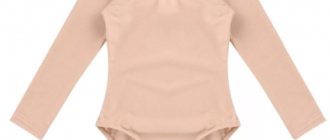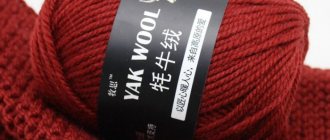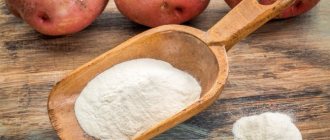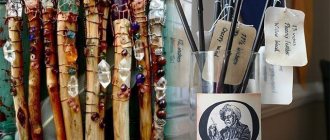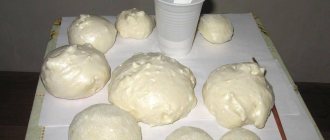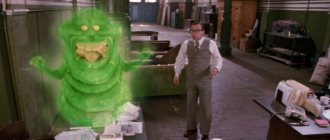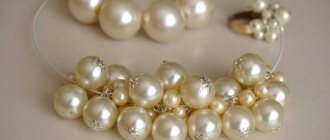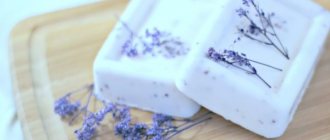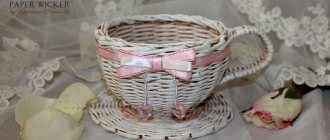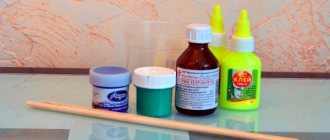Preparing to sew
You should first prepare all the necessary tools and materials.
These include:
- needles and pincushion;
- threads;
- textile;
- thimble;
- sharp scissors;
- tape measure;
- tailor's pins;
- tailor's chalk;
- iron with steam function.
Iron the fabric
Before sewing, the prepared fabric must be ironed on the wrong side with a hot iron. This is especially true for fabrics that tend to shrink, as this method will help set the fabric. In addition, ironed fabric is much easier to work with.
Insert a needle into a thread
The end of the thread should be threaded into the eye of the needle. If this is difficult to do, it is recommended to purchase a special auxiliary device that will significantly facilitate the task for people with low vision.
Hand stitches can be made using either a single or double thread. If you plan to sew with a single thread, the thread should be threaded into the needle so that one end of the thread is longer. Then you should cut the required length and tie a knot at the tip of the long thread. After this you can start sewing.
To make a knot, the thread should be wound around your finger until a loop is formed. Then you need to roll up the formed turns with your thumb and pull the end of the thread.
If the seams need to be made with double thread, you need to thread it through the needle so that both ends of the thread are the same length. Then you need to tie a common knot and start sewing.
How to make the 1st stitch?
It is necessary to insert the needle from the wrong side of the material and pull it out from the front side. Then you should insert the needle into the material near the original piercing site and completely pull it out along with the thread to the wrong side. The first stitch is ready.
The stitch needs to be made tight enough so that it can lie flat on the fabric without pulling the fabric too tightly.
Textile
If you are new to sewing and are wondering what fabric to choose for sewing clothes, then you have several ways to solve this issue. The first is to listen to the advice of sales consultants in a fabric salon. The second is to read the sewing recommendations in Burda magazine. The third is to find this information on the forums or ask me in the comments. Therefore, before you start sewing, you need to take a responsible approach to choosing fabric, otherwise it happens that:
Error 1
The wrong fabric was chosen for sewing the product. Usually in sewing magazines, recommendations are given along with the pattern on what fabric to choose for this model. When a particular type of clothing is being developed, a fashion designer, designer, or technologist work on it. It is the technologist who selects the required fabric, taking into account all its properties: stretchability, shrinkage, etc. This advice determines how the item will look - if you choose the wrong fabric for the skirt, the folds may not lie properly, and the trousers may bulge at the knees.
Recommendations for choosing fabric in Burda magazine
Error 2
A complex fabric was chosen to sew the product. If you are familiar with the properties of fabrics, then you know that according to the complexity of processing, they are divided into simple and complex. I always recommend that my students start with fabrics that are easy to sew. In order to sew products from chiffon or lace, you first need to “get your hand” - learn how to work with any fabric.
In order to know what types of fabrics for clothing there are, I recommend reading this article >>>
Error 3
Expensive fabric was purchased to sew the product. Now in salons there are many materials of different price categories. Don't think that if you choose cheap fabric, you will make the wrong choice. Sometimes a well-made item made from inexpensive gabardine looks much better than a poorly fitted dress made from Italian lace. Focus on the fact that you are still learning to sew, training, training your hand.
Error 4
To sew the product, fabric was purchased back to back. This is a particularly common situation among novice dressmakers. Having calculated the approximate consumption of fabric, do not be greedy and buy a little with a margin of 30 - 40 centimeters, making the calculation that you may spoil some part and will have to cut it again.
Mistake 5: Model complexity
The item taken was too complex for sewing. This is one of the most common mistakes that novice seamstresses and needlewomen make - taking on jackets, coats and cardigans at first. In sewing magazines there is a gradation of models according to the degree of complexity - for beginners (sewing is easy and simple) and models that require special knowledge. If you are not familiar with the process of connecting the lining to the product or sewing a pocket - leaves, it is better to study these sewing operations and practice on a sample. In the meantime, choose models recommended for beginning needlewomen - then you won’t give up halfway because you simply don’t know what to do next.
Mistake 6. Sewing machine
Buying a sewing machine with too many functions. This mistake is common to all novice seamstresses planning to purchase sewing equipment. Yes, the quality of the item depends largely on a good tool, but if you sew sloppy and crookedly, no expensive machine will save you.
I often get asked the question: how to choose a sewing machine and what set of sewing operations should it have? I answer from personal experience, proven over the years, that a sewing machine should be able to make a straight stitch, a zigzag stitch, and overcast buttonholes. This is all I use in my long sewing practice, and for overcasting the edges of the fabric, I have an overlocker, so I have two sewing machines. If you don’t have the opportunity to buy a serger, use a zigzag stitch, it will also prevent the fabric from fraying.
When buying a machine, it is better to pay attention to models with a minimum set of sewing operations - but from trusted manufacturers. I answer this question in more detail here >>>
Straight stitch
This stitch is made by repeating the two steps used for the first stitch. In this case, it is necessary to ensure that the stitches are of the same length and located close to each other.
The last stitch should be finished by piercing the fabric with a needle from the right side and tying a securing knot as close to the fabric as possible so that the stitching does not move or stretch.
Invisible seam No. 2 – “Emergency”
The second hidden seam can help out in an unforeseen situation. For example, a hole appeared right before an important event, but there is no time to repair the product. You can sew it up with an invisible seam directly on yourself.
Step-by-step instruction:
- Thread a thread matching the color of the item into the eye of the needle. Tie a knot at the end of the thread.
- Thread the needle through the hole. Bring it out at the edge of the hole, leaving a knot on the wrong side.
- Using a needle, pick up several threads of fabric from one side of the hole and then from the other.
- Pull up the thread.
- Having retreated a few mm, again pick up the fabric at the edges of the hole and pull it off.
- Continue until the hole is completely sewn up.
- Make a knot and cut the thread.
We recommend: Why do we put balls in paper bags in shoe boxes, how to use them
The photo clearly shows how an “emergency” blind seam is performed.
In the master class, the thread is used in a contrasting color so that the viewer can see the details of the process. If you match it to the color of the product, the seam becomes more invisible.
Video:
Other stitches
There are several basic options for hand stitches. The ability to make such seams will certainly be useful to any needlewoman more than once.
Basting stitch
Used for tightening fabric, placing pintucks, darning and seams that do not experience stress. To make a seam like this, you need to make several stitches forward, evenly inserting the needle into the fabric and bringing it to the surface before pulling the thread.
The number of stitches directly depends on the thickness of the fabric. The length of the stitches and the distance between them are influenced by the location of the seam.
Zigzag stitch
In this case, the stitches are made from side to side. This stitch is used when working with elastic fabric or to strengthen button loops.
To lay it, you first need to fold the fabric in half and secure it with a pin. Then you need to open the edge slightly and insert the needle so that it comes out from the front side. Then you need to make a vertical stitch up and return the needle to the starting point.
Then you should make a diagonal stitch to the left and return the needle to the right side under the end point of the diagonal stitch. These steps must be repeated until the very end of the seam, which must be completed with a vertical stitch.
Blind stitch
It is used for maximum inconspicuous fixation of folded edges of fabric, attachment of lining and pockets.
In the process of making a blind seam, the needle must be inserted from right to left, grabbing no more than one thread of the upper fabric, and then grabbing the fabric of the upper fold of the hem. There is no need to pull the thread tightly.
The blind seam should be made with a thread that matches the color of the main fabric.
video tutorials on where and how to start
Attaching several layers of fabric in one place is called a seam. Nowadays, there are many types of different seams, each of which has a specific purpose. With some types we can easily baste the fabric, with others we can firmly secure it, and with others we can process the edges. Absolutely all seams in the world are divided into two groups: those that are made with your own hands, and those that are made using a tool - a sewing machine. Of these, there are those that are made only by hand, and there are those that are created using a machine and by hand. In this article we will talk about how to make an overcast seam by hand, a video of its creation will definitely give you all the ideas about this type of seam.
Embroidery stitch
Very often situations arise when you need to join the edges of fabric or overcast the edges of clothes, then a regular overcast stitch, which you do yourself, can come to the rescue. So, those who are just trying to learn the sewing process are wondering how to start it. A total of three holes will be used - A, B and C.
We put the needle on the wrong side and in hole “A” we bring the thread to the front side. Then on the “face” we insert the needle into point “B”, after which we bring it out in the hole “C”.
It should be noted that in the process of making this seam, the thread must be under the needle.
Pull out the needle at point “C” and tighten the thread, tightening it a little, but do not overdo it, because the fabric should not be skewed. The thread should go forward or towards itself.
The next step is to insert the needle into the next point “D”. Now it is on the wrong side, and we draw it at point “E”, which should be at the intersection of straight lines “C” and “D”. Do not forget that the thread is under the needle, otherwise the seam will not work. Again, very carefully pull the thread towards you. Continue making stitches in this manner.
If you have already reached the end and don’t know how to finish, then we will help you. After you have carefully tightened the thread one last time, return the needle back to the wrong side. And then pull the thread forward again so that it forms a regular straight stitch. Fasten in a way convenient for you. This is how we get an overcast stitch, which craftswomen use for embroidery.
For finishing edges
Its production can also be traced using the example of a master class with photos.
To begin, bend the fabric several times, making a small fold 5-6 mm wide. For a detailed story, we will also use not three points A, B, C, but only the first two. We pass the thread and needle to point “A”. Then on the front side we insert the needle in the direction from side B as indicated in the photo. Hole “B” is located immediately under the fold. The remaining length of thread should be under the needle.
After we have carefully tightened the first loop, we need to pass the needle into the next hole C. We bring the needle under the fold again and then pass it over the thread.
Using this manipulation, we overcast the entire edge of the product, or we make the required number of stitches. After everything is finished, you need to secure the thread. To do this, use a needle to go over the last stitch so that the thread passes through the fold. Then again, do not tighten the thread too much and secure it.
You can make this seam more frequent by making the stitches very close to each other. If you want to achieve a perfect seam, the stitches must be made at the same height. In general, it can be completely different; you can make the height in groups. The stitches themselves can be of different shapes and made in different directions.
Double option
The making of this seam is very similar to the work of the previous one, but for a double one you will need a thread folded in half.
First, as in the previous one, we draw up the first stitch.
At this stage, the double overlock seam differs from the usual one. We need to pass the needle a second time into the same hole.
We make the required number of stitches and close the work, tighten the thread. This is what a very nice double overlock stitch looks like.
How to sew 2 parts?
You need to attach the two parts with their front sides facing each other. The edges along which they need to be fastened must be aligned and stitched along a line that follows the contours of the edge.
Threads on how to sew 2 pieces of wool
After completing the parts, you need to slightly pull them to the sides and make sure that the seam you make holds them together well and the thread is barely noticeable.
Needles for skin.
There are specialized needles for sewing leather and I will explain why it is so important to use them.
Genuine leather is a fibrous material. Artificial leather is made from fabric or a compressed layer. The topcoat can be more or less porous. And this material needs to be cut or cut through in order to insert the thread there.
The leather needle has a bevel, so it easily enters the leather, making neat holes. The universal needle has a different structure. If you try to sew leather with a universal needle, it will quickly become dull, you will start to have tension problems, the threads will split, and the stitching will simply be crooked. The most important thing is that there will be unsightly holes. If it is artificial leather or poorly dyed natural leather, then the paint will peel off around this hole. The appearance of the stitching will be ugly.
Leather needles differ in the width of the entry angle and inclination, so that different stitch options are formed.
Some girls use leather needles that are intended for sewing jeans. But this can be done if these are really needles for denim. Still, try to buy needles for the skin. For household machines they are one, for industrial machines they are different. There are many good companies with needles. Many girls praise Japanese needles. There are German companies with many variations for leather. I myself prefer Grotz Beckert needles - this is not an advertisement, I'm just sharing what I use myself. They have several detailed photos on their website where they show the needle itself and what the stitching it does looks like on the skin. When I was choosing needles, I looked exactly at these lines. You will begin to understand better when you try. I can’t tell you for sure whether these needles are available for household machines, but they definitely are for industrial machines.
If you choose the right paws and needles, even without such nuances as in the Grotz Beckert assortment, this will already reduce the number of unsuccessful experiments. Many of us live in small towns where there is very little equipment for such things. But you need to somehow look for ways and find all these components so that the item is sewn beautifully and professionally. At a minimum, it will be a good thing for your family, or an item for sale.
Selection of needle and fabric.
Without the correct selection of fabric density and needle number, you will not get a neat stitch. This is the preparatory stage and the quality of sewing will depend on how correctly you select this pair.
The combination of needle and fabric is one of the most frequently asked questions in our joint sewing projects among beginning craftsmen. Since I can’t go to the store with you, I try to help you with your choice as much as possible with the help of photographs. Again, I don’t know what they sell in your stores. But there is a certain rule that you can rely on. This rule is this: the thicker the material, the larger the needle needed and the thicker the thread should be. Focus on the tables, there are many of them on the Internet.
If you plan to make money by sewing bags, then I recommend using everything of high quality. I installed a needle and haven’t changed it for six months now, because it is made specifically for the skin. Also, foot and thread. And accordingly, I have no problems with this.
Tips and tricks for beginners
For those who are just starting to learn how to sew with a needle and thread, it will be useful to familiarize yourself with the following recommendations:
- It is better to purchase only high-quality needles for hand stitches from manufacturers that have already proven themselves well. It is recommended to give preference to needles with a “golden eye”, which are coated with a special coating. This coating ensures easy threading of the needle and easy sliding of the needle through the fabric.
- It is necessary that the needle matches the thickness of the threads chosen for sewing. The thicker the needle, the more effort will have to be exerted when moving it through the fabric. For this reason, it is not recommended to select a thick needle for hand sewing with fine thread.
- Crooked, dull or rusty hand needles are unsuitable for use. In addition, embroidery needles with a blunt tip should not be used for hand sewing. Such needles are used exclusively for cross stitch on canvas.
- When making hand stitches, it is recommended to use a thimble. This will help protect your fingers and nails from accidental damage and will significantly speed up the process.
Hand stitches and seams are mostly used for embroidery and needlework. But sometimes they are used even when sewing clothes on a sewing machine. In addition, such seams cannot be dispensed with when trying on and basting clothing parts.
Adjust your sewing machine before sewing
Before sewing on a sewing machine, you need to adjust the stitching, i.e., the tension of the upper and lower threads. The thread in the stitch should not loop, the interlacing of threads or otherwise the stitch knot should be in the fabric and not on the surface. The seam should not be pulled together after joining on the machine. It is easy to check the correct thread tension as follows. Take a piece of fabric that will be worked with in the future, fold it in half and grind it almost along the fold (at a distance of 0.1-0.2 cm). Stretch the resulting seam, if it breaks, see which thread has broken - the top or bottom, and loosen the tension of one of them. Check the stitching and adjust until the stitching stops tearing. If the tension of the upper or lower thread is insufficient, a defect sometimes occurs - a “grin” of the seam. When ironing, the parts of the product move apart and threads become visible in the seam. To eliminate this defect, you need to increase the tension of the shuttle thread and adjust the tension of the upper thread.
This is a universal guide for threading any sewing machine and bobbin winding. A video with professional commentary will help you learn how to thread your sewing machine correctly.
